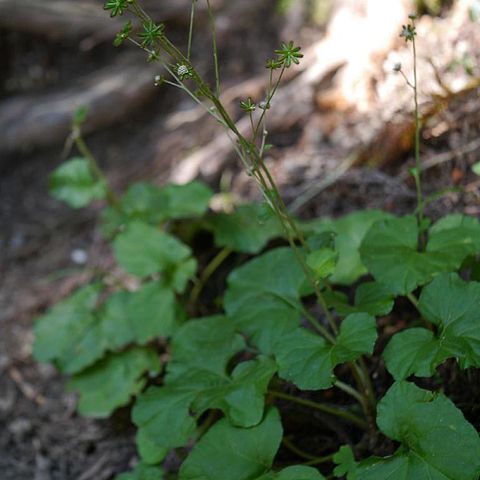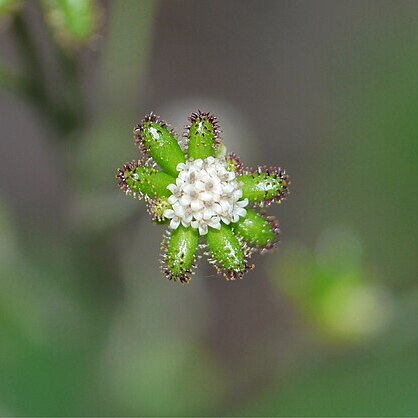Herbs, perennial, from creeping rhizomes. Stems erect, 30-100 cm tall, arachnoid, with stipitate glands on upper portion. Leaves radical and cauline; radical leaves withering before flowering; lower leaf blade broadly ovate or reniform, 7-13 × 11-22 cm, whitish arachnoid abaxially, subglabrous adaxially, base deeply cordate, margin irregularly toothed, apex subacute or obtuse; petioles 10-20 cm, winged; median and upper leaves gradually smaller, winged petiolate; uppermost leaves broadly lanceolate, becoming bracteate. Capitula ca. 5 mm in diam.; peduncles 2-6 cm, stipitate glandular; involucre subglobose, ca. 2.5 × 5 mm; phyllaries 5-7, 1-seriate, ovate, 2.5-3 × 1.5-2.3 mm, reflexed after flowering; receptacle convex, glabrous. Marginal florets female, 6-12, corollas white, tubular, 1.1-1.5 mm, glabrous, 4-or 5-lobed at apex; disk florets male, 4-12(-22), corollas white, 1.7-2 mm, glabrous, 5-lobed at apex; anther connective rounded at apex, scarcely projecting. Achenes clavate-obovate, 6-7 mm, stipitate glandular. Fl. Jun-Aug, fr. Sep-Nov. 2n = 46.
More
A herb. It keeps growing from year to year. It grows 30-100 cm tall. The lower leaves have long stalks. The upper leaves do not have a stalk. The leaves are 7-13 cm long by 11-22 cm wide. The leaves are rounded or kidney shaped and can be wavy or with teeth near the edge. The flower heads are daisy like and are white.



